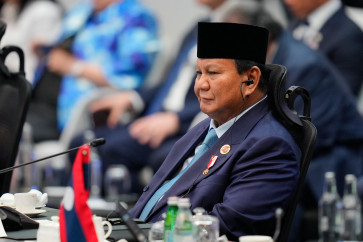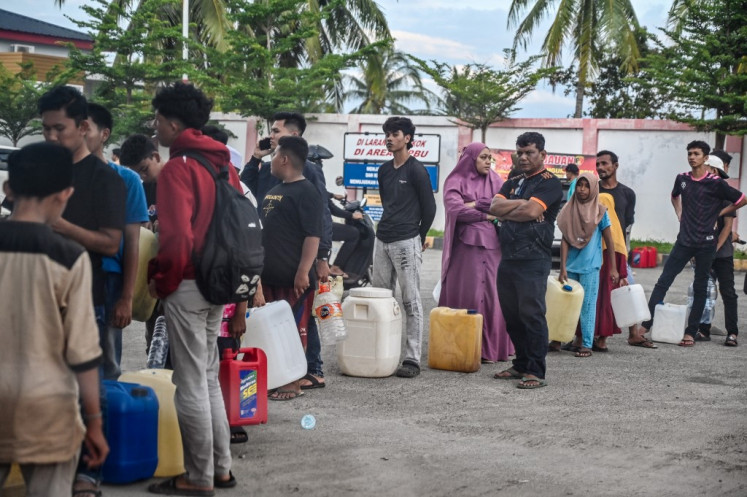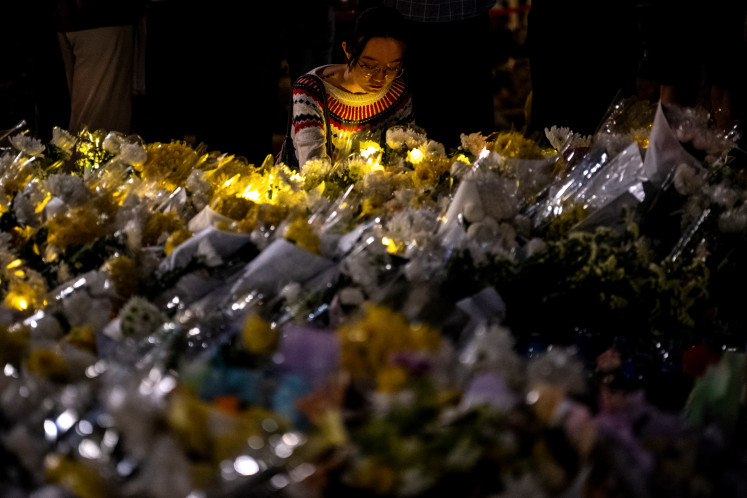Popular Reads
Top Results
Can't find what you're looking for?
View all search resultsPopular Reads
Top Results
Can't find what you're looking for?
View all search resultsMangrove forest boosts ecotourism
Initially serving as only a wave barrier, a mangrove forest of one hectare in Kupang Bay has been transformed into an ecotourism site that has gained in popularity among tourists in Kupang, East Nusa Tenggara
Change text size
Gift Premium Articles
to Anyone
I
nitially serving as only a wave barrier, a mangrove forest of one hectare in Kupang Bay has been transformed into an ecotourism site that has gained in popularity among tourists in Kupang, East Nusa Tenggara.
Tourists, both domestic and foreign, have been flocking to the site, situated in Oesapa Barat subdistrict, Kelapa Lima district in Kupang municipality, since the inauguration by Kupang Mayor Jonas Salean on Feb. 13.
“The location was once just a mangrove swamp to withstand the waves and where fishermen looked for crabs. After training was funded by the [United Nation’s] International Fund for Agricultural Development (IFAD), it has now been serving as a mangrove ecotourism location,” neighborhood unit chief in Oesapa subdistrict Daris Foeh told The Jakarta Post on Monday.
Daris said he did not expect a mangrove forest protected by local residents to actually benefit the local community after it was transformed into an ecotourism site.
A prohibition on cutting down mangrove trees helped protect the forest, he said, adding that the ban had been enforced on all people for generations and that anyone caught cutting a tree would face a fine of up to Rp 250,000 (US$19).
Local people and authorities agreed to transform the site into an ecotourism destination with help from IFAD in December 2015.
In order to facilitate tourists visiting the site, the local authorities built a 350-meter long boardwalk 2 meters above sea level across the mangrove forest. The cost of the boardwalk amounted to Rp 350 million.
“The entrance fee for each visitor will be used to build three houses for visitors to rest in,” he said.
None of the mangrove trees were cut during the construction, Daris said, adding that local residents recently planted 1,000 mangrove tree seedlings as part of efforts to preserve the area.
Entrance keeper Binwi Poy said around 20 to 30 visitors come to the site daily, a number he claimed could reach between 100 and 200 during the holidays.
Separately, Kupang Tourism Office head Esther Muhu said the Kupang municipal administration aimed to continue the preservation of the forest following a rise in popularity among tourists.
“It’s not only the responsibility of the government to organize tourism in Kupang city, but support from all parties, especially the people, is needed,” Esther said.
Besides the mangrove forest, the administration was also promoting its newly launched Batu Kapala beach tourism site in Nunhila subdistrict.
The local administration, she said, urged the local people to help boost the economy by taking an active role in developing the tourism sector by providing services near the tourism sites.
Indonesia is home to the world’s largest mangrove forests thanks to its rich coastal ecosystems. However, the ecosystems are also among the world’s most threatened — the country has lost 40 percent of its mangroves in the past 30 years from dredging, degradation of water quality, deforestation and aquaculture activities.










